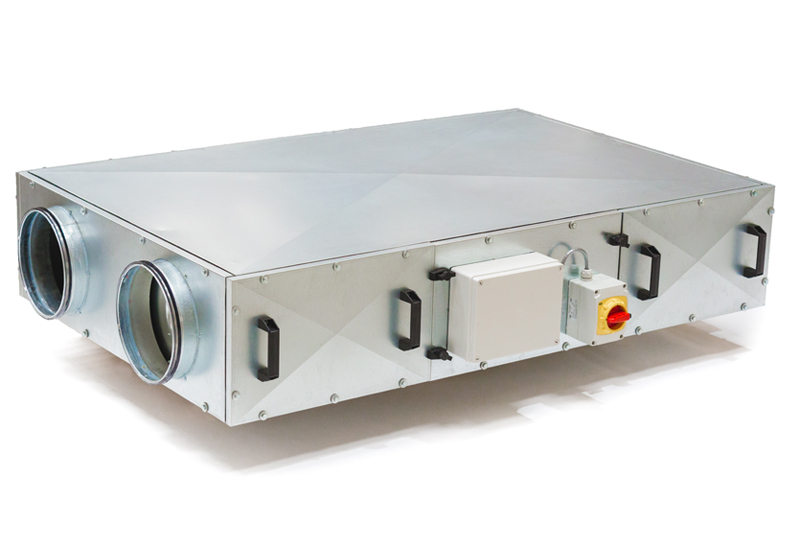
Mechanical Ventilation with Heat Recovery (MVHR) has been a well-established method of ventilation for quite some time. However, Paul Harrington, Head of Residential Sales at Elta Fans, explains that it’s crucial systems start to incorporate cooling technology (MVHCR) in response to more thermally efficient homes and a changing climate.
The ability to heat incoming air by passing it over a heat exchanger has helped to improve the energy efficiency and comfort of our homes. It ensures that thermal energy remains in the building, without incurring high heating bills.
This has been a successful process for several decades now, especially during the colder months when the outside air is lower than inside. However, advancements in the insulation of our structures, combined with a warmer climate, have presented a significant issue for strategies which incorporate MVHR, particularly during hotter months.
The MVHR problem
Although widely regarded as an energy efficient way of managing air circulation in a building, it is noticeable that the benefits of MVHR are rarely discussed during the summer months. This is because when the outside air is warmer than inside, this type of ventilation actually raises the internal temperature.
Even the summer bypass function, which is almost universally used across MVHR units does little to solve this issue. When the incoming air does not need to be heated, the bypass function stops the air from being passed over the heat exchanger. But consider, for example, that the desired temperature within a building is 20oC. If the outside temperature is anything more than this, the incoming air will be hotter than inside, regardless of whether the summer bypass is in operation.
It is difficult to avoid the fact that we are heading towards a climate emergency, with action groups and changes to climate change policy ensuring it remains high on the news agenda. Temperatures in the UK are getting irrefutably higher, and as a result, our summers are getting longer.
Furthermore, our structures have become increasingly well insulated, which has meant that they retain heat far better than ever before. Although this has had a positive effect on the amount of energy expended in heating buildings, it has meant that the application of MVHR has decreased in importance. Indeed, overheating as a result of this type of ventilation is a fairly common occurrence.
The combination of a warmer climate and more insulated buildings means that the period of time in which MVHR is viable is shortening, and the need for an alternative system, which is capable of introducing cooler air into buildings, is increasing.
MVHCR as the solution
Mechanical Ventilation with Heating and Cooling Recovery (MVHCR) units, such the Vigo and PREMA ranges, are capable of maintaining thermal comfort within buildings, even during warmer months. By essentially acting in reverse, they are capable of passing outgoing cooler air over the heat exchanger, which helps to ensure the incoming air remains ambient.
This has a very obvious impact on the thermal comfort for occupants, as the desired comfort level can be maintained, whether the outside temperature is warmer or colder than inside. It also has a knock-on effect on the efficiency and effectiveness of air-conditioning, which has itself come under increased scrutiny over the past few years.
Manufacturers of air conditioning units are under pressure to deliver a more environmentally friendly product, in light of the fact that a sizeable proportion of the UK’s energy consumption is linked with the units. MVHR acts in a similar way to opening a car window with the air-con on: the vehicle’s climate control has to work harder to combat the incoming warm air.
MVHCR dovetails effectively with air conditioning, because it prevents the coldness within the air from escaping, and instead transfers it to the warmer incoming air. In doing so, it helps to reduce the amount of work that air conditioning units have to do to keep a building cool, as they work in tandem to achieve the ideal internal temperature.
MVHCR is the year-round solution, capable of improving thermal comfort across all seasons. As our climate becomes progressively warmer, and our structures are increasingly better insulated, the ability to both heat and cool incoming air is vital in achieving thermal comfort within our homes and commercial buildings.












